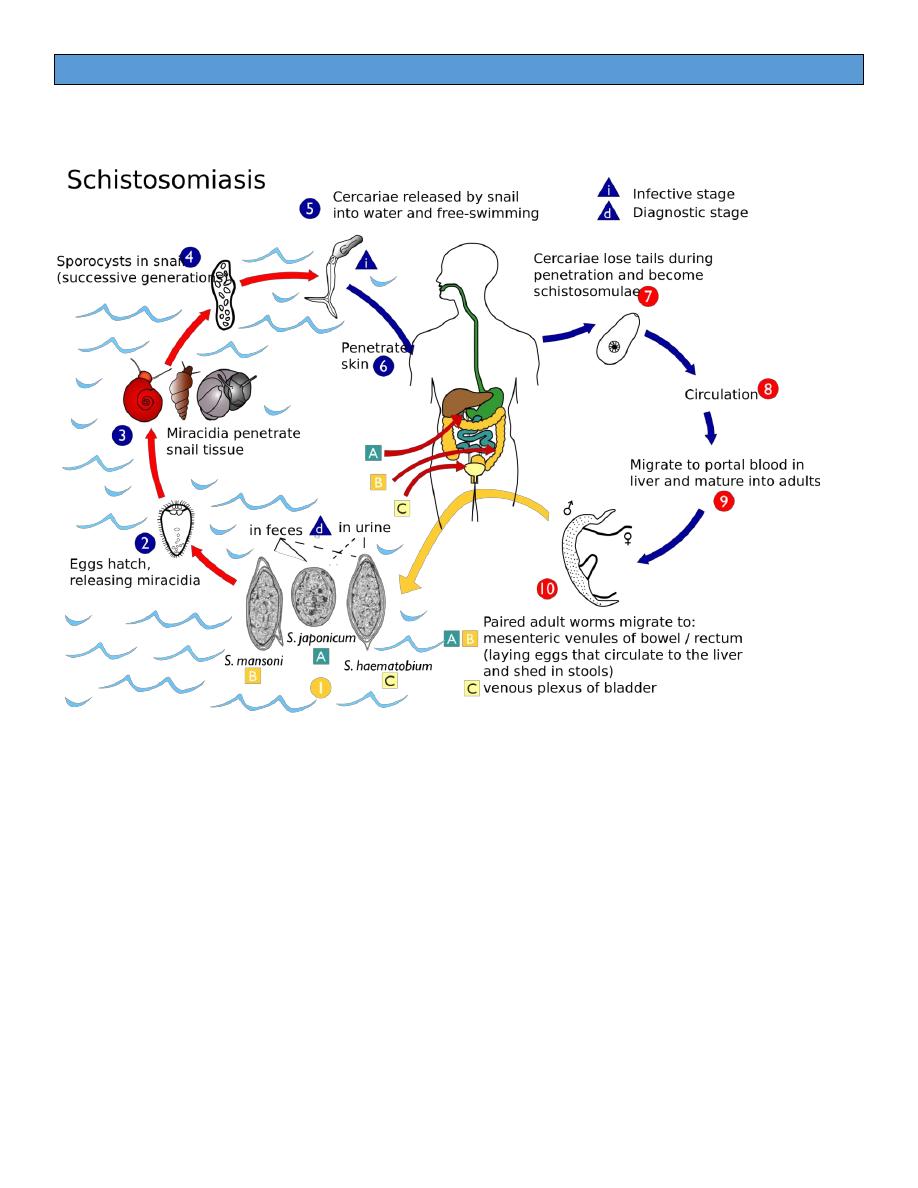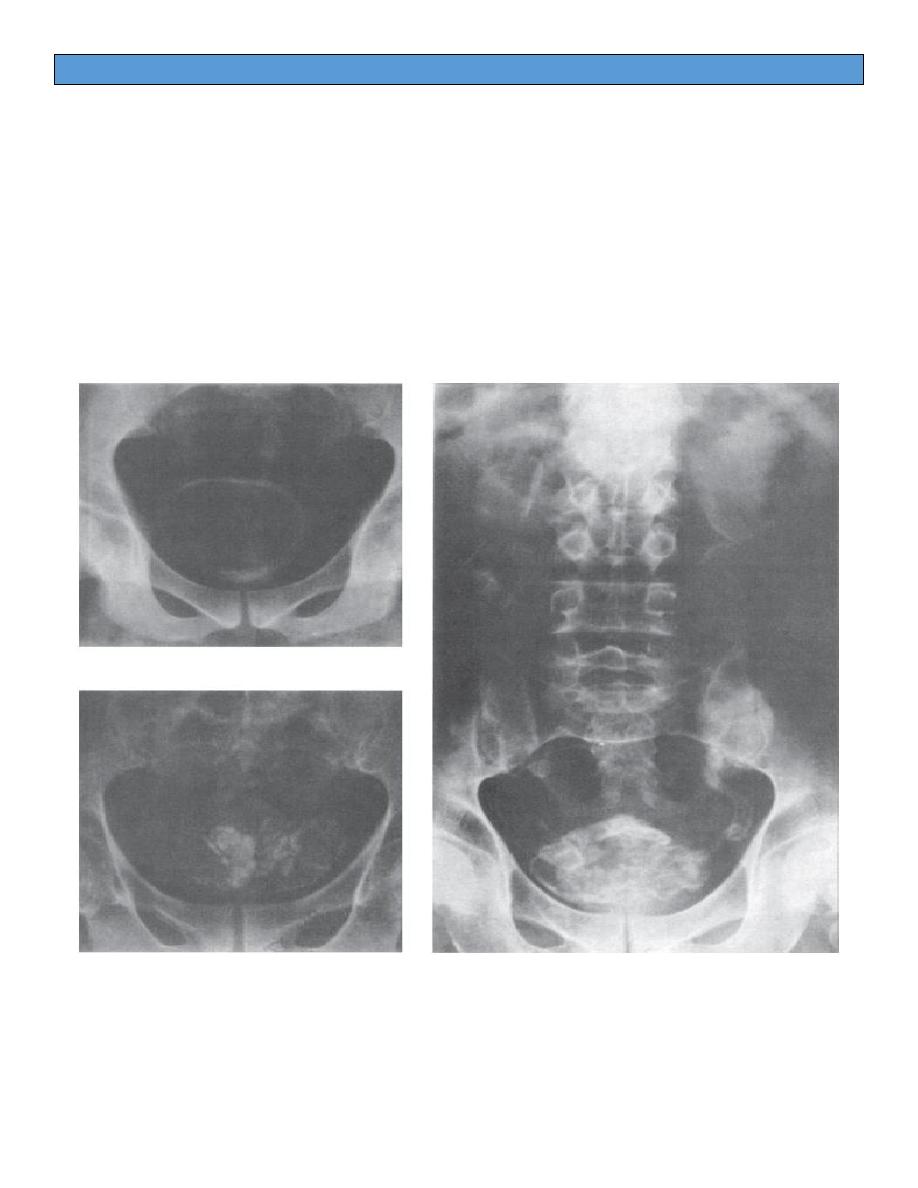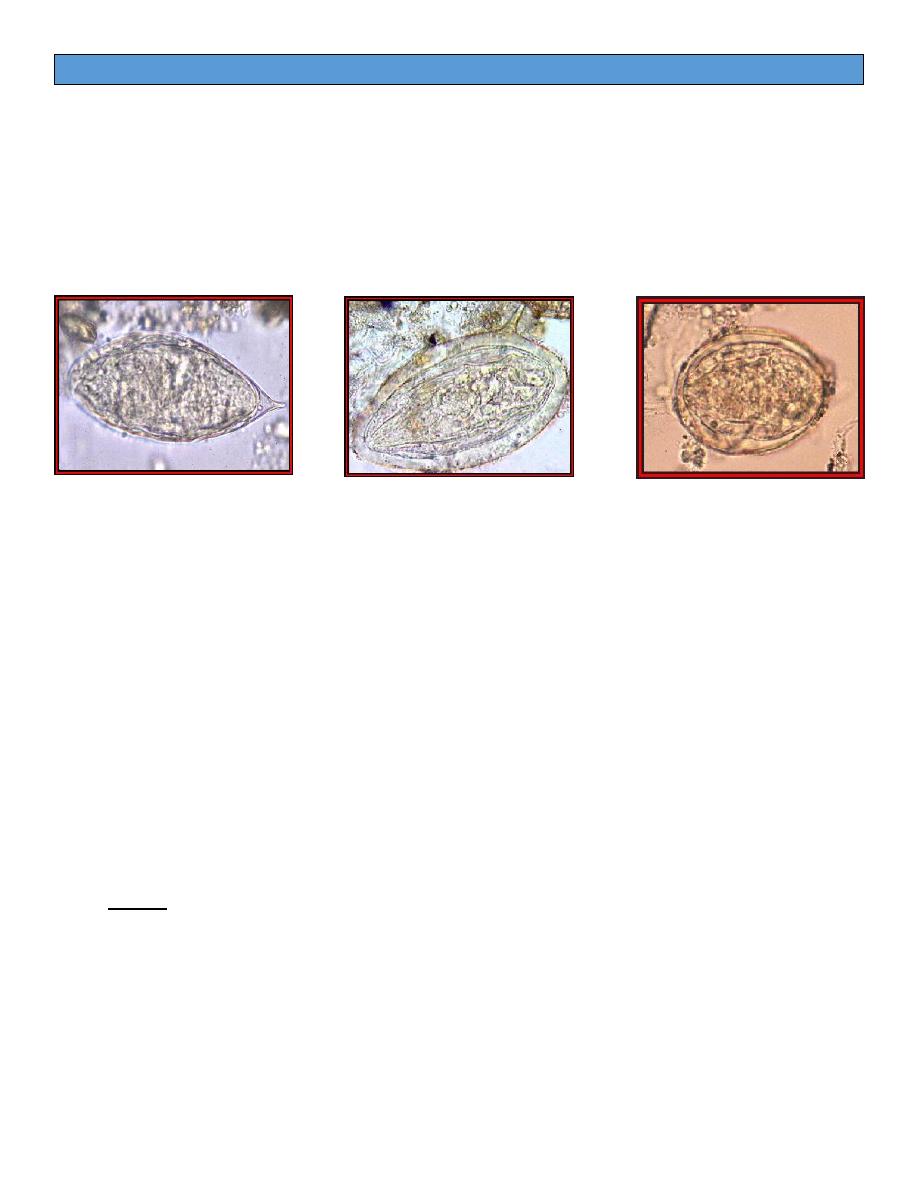
P a g e | 1 Schistosomiasis G:E
Schistosomiasis (Bilharziasis)
Etiology:
- Schistosomiasis, caused by a blood fluke, is a disease of warm climates.
- The form affecting urinary tract involves Sch. Haematobium.
- The other forms (Sch. Mansomi and Sch. Japonicum) affect GIT.
- The dis. Is endemic in the middle east (Egypt),India and Africa.
Schistosomiasis is on the increase in endemic areas because of the
construction of modern irrigation systems that provide favorable
conditions for the intermediate host, a freshwater snail.
This disease principally affects the urogenital system, especially the
bladder, ureters, seminal vesicles, and, to a lesser extent, the male
urethra, and prostate gland.
The contents of the ova trapped in the tissues and the death of the
organisms cause a severe local reaction, with infiltration of round cells,
monocytes, eosinophils, and giant cells that form tubercles, nodules,
and polyps.
These are later replaced by fibrous tissue that causes contraction of
different parts of the bladder and strictures of the ureter.
Fibrosis and massive deposits of eggs in subepithelial tissues interfere
with the blood supply of the area and cause chronic bilharzial ulcerations.
Epithelial metaplasia is common, and squamous cell carcinoma is a
frequent sequela.

P a g e | 2 Schistosomiasis G:E
Schistosoma life cycle
A. SYMPTOMS:
- penetration of cercariae causes transient dermatitis (
swimmer ‘itch).
- During the stage of generalization or invasion, the patient complains of
symptoms such as malaise, fatigue and lassitude, low-grade fever,
excessive sweating, headache, and backache.
- When the ova are laid in the bladder wall and begin to be extruded, the
patient complains of terminal, slightly painful hematuria
- Later: Increasing frequency, suprapubic and back pain, urethralgia,
profuse hematuria, pyuria, and necturia are likely to occur, with
secondary infection, ulceration, or malignancy.

P a g e | 3 Schistosomiasis G:E
Urinalysis (GUE)
- reveals the terminal-spined dead or living ova,
- blood and pus cells, and bacteria.
- Malignant squamous cells may be seen.
X-RAY FINDINGS
- A plain film of the abdomen: Linear calcification may be seen in the
ureteral and bladder walls
- Cystograms often reveal vesicoureteral reflux, particularly if the bladder
is contracted

P a g e | 4 Schistosomiasis G:E
Diagnosis
1. Shistosoma haematobium (in urine) its eggs have terminal spine.
2. Shistosoma mansoni eggs found in stools with lateral spine.
3. Shistosoma japonicum eggs are round and found in stool.
Cystoscopy: may show
- grayish tubercles surrounded by a halo of hyperemia,
- old calcified yellowish tubercles,
- sandy patches of mucous membrane,
- lusterless ground-glass mucosa that lacks the normal vascular pattern.
- bilharzial polyps,
- chronic ulcers on the dome (weeping ulcers),
- vesical stones,
- malignant lesions,
- stenosed or patulous ureteric orifices
Antischistosomiasis:
1- Praziquantel:
- Mech.: increase cell membrane permeability to Ca which leading to
tetany and paralysis of the organism.
- Used with all forms of Schistosoma.
- Side effects:
Arthralgia and myalgia.
Dizziness.
Abortion.
- Contraindication: Pregnancy
1
2
3

P a g e | 5 Schistosomiasis G:E
2- metrifonate:
- Mech: in the liver it is activated to Dichlorovos ( organophosphorate
derivative ) which inhibit Ach estrase in the organism leading to
respiratory paralysis and death.
- uses: only for Sch. Haematobium (renal bilharziasis).
- Side effects:
- Vertigo.
- Symptoms of organophosphate poisoning (N&V,hypersalivation,
bronchospasm, weakness, convulsions.)
3- Oxamniquine:
- Mech: anticholinergic action.
- uses: only against sch. Mansoni (intestinal bilharziasis).
- side effects:
Hallucination.
Urine discoloration.
Increase liver enzymes activities.
Pulmonary infiltration.
Surgical treatment: Used for Ureteric stricture & small fibrotic changes in
the bladder
